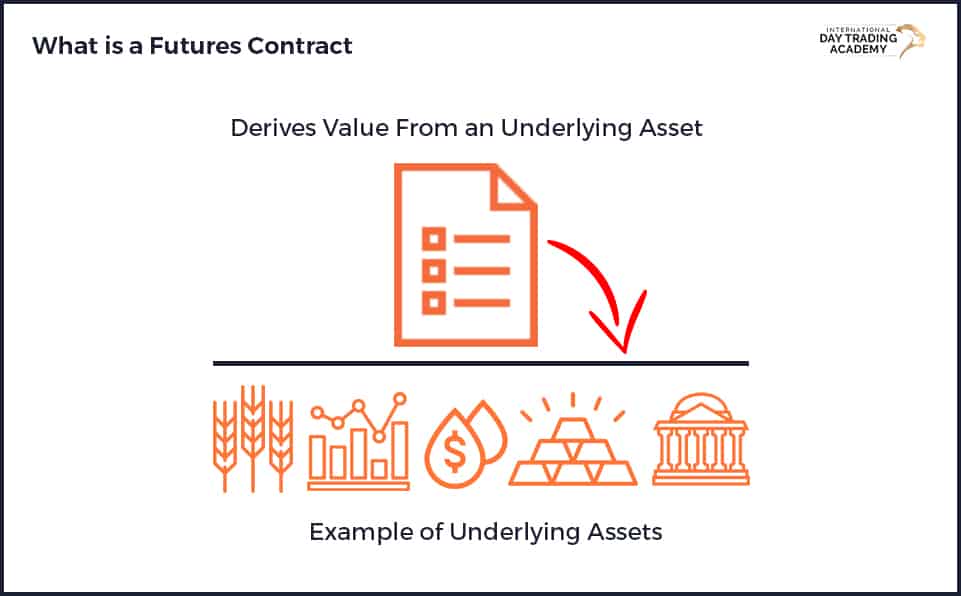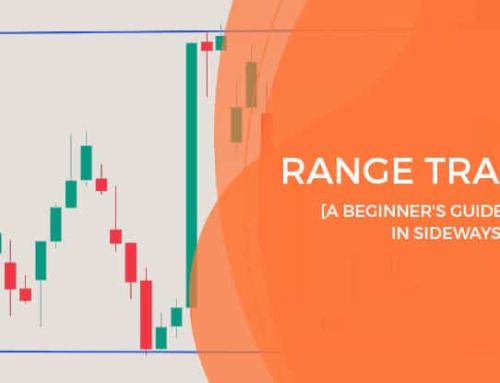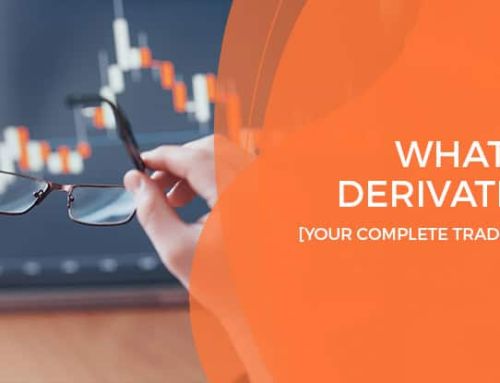What is a Futures Contract?
A futures contract is an agreement between two parties that obligates them to buy or sell a particular underlying asset. For example, commodities, currencies, or financial securities, at a specified price and on a future date. The two parties involved are called the buyer and the seller of the contract.
These contracts are traded on organized exchanges like the Chicago Mercantile Exchange (CME) or the New York Mercantile Exchange.
Originally conceived as a way to manage business risk, today they can also be used by a day trader to speculate on price movements.
Regulated by the Commodity Futures Trading Commission , futures contracts have standardized terms. They cater to different markets such as the stock market, commodity market, and currency futures.
Contracts can be physically delivered, like natural gas or crude oil, or cash-settled, like S&P500 index futures.
They play a big role in financial markets, attracting retail traders, and other market participants. This is due to their defining characteristics as exchange-traded derivatives. The complexity of these instruments comes with big advantages. They enable various investment strategies and exposure to different underlying assets.

Key Concepts and Terms
Futures contracts have a set expiry or delivery date, which signifies when the contract settles. These contracts involve an agreed-upon futures price for buying or selling the underlying asset.
Market participants include speculators, who aim to profit from price movements. They also include hedgers, who use futures to safeguard their business against price fluctuations.
To open a futures position, an initial margin is required, serving as collateral. Daily changes in the futures price are settled through cash settlement on a daily basis.
Understanding expiry, futures price, hedgers, speculators, initial margin, and cash settlement, you can navigate the complexities of exchange-traded derivatives. This can allow you to take advantage of the opportunities presented by financial markets.
Futures Contract Expiration
Futures contracts have a limited lifespan; they don’t remain open indefinitely. Each contract has a predetermined expiration date, beyond which it becomes invalid. Market participants need to be aware of this to manage their positions effectively.
At the expiry of a contract the buyer agrees to receive the underlying asset. Speculative, retails traders, don’t want to receive physical assets and thus should exit before expiry. Your broker will likely exit you from the trade on your behalf if you are a retail trader.
Contract Specifications Futures
The contract specifications for futures detail the terms governing the contract. Here are some of the common contract specifications.
Underlying Asset: The asset that the contract is based on. This could include commodities, agricultural products, financial instruments like stock indices, and more.
Contract Size: The quantity of the underlying asset that the contract represents. For example, a gold futures contract might represent 100 troy ounces of gold.
Expiration Date: The specific date on which the contract expires. After this date, the contract is settled.
Tick Size: The minimum price movement allowed in the contract. Also known as the “tick value,” it represents the smallest increment by which the contract’s price can change.
Price Quote: How the contract’s price is quoted. For example, stock index futures might be quoted in points, while commodity futures might be quoted in cents or dollars.
Contract Settlement: How the contract is settled at expiration. There are two common settlement methods:
- Cash Settlement: The contract is settled in cash based on the difference between the contract’s price and the market price at expiration.
- Physical Delivery: The holder of the contract can take delivery of the actual underlying asset. Speculators day trading in Australia will exit the trade prior to the delivery date.
Margin Requirements: The amount of funds required to hold a position in the futures contract. Initial margin and maintenance margin levels are usually specified.
Contract Code: The unique identifier or ticker symbol that represents the contract in trading systems.
Contract Size in Futures
The contract size in Futures is simply the quantity of an underlying asset per contract. This varies from product to product.
Here are some examples of contract size:
Gold Futures: If a gold futures contract has a contract size of 100 troy ounces, buying one contract means you are committing to buy 100 troy ounces of gold at the contract’s predetermined price.
Crude Oil Futures: If a crude oil contract has a size of 1,000 barrels, purchasing one contract means you are agreeing to buy 1,000 barrels of crude oil at the specified price.
S&P 500 Index Futures: Indices trading such as S&P 500 index futures, where the contract size might be quoted in points, a contract could represent a value of $50 per point.
Futures Contract Codes
A futures contract code, or “ticker symbol”, is a unique combination of letters and/or numbers. These letters and numbers represent a specific futures contract on a trading exchange.
This code is used to identify and differentiate various contracts from one another, as there can be multiple contracts trading for different expiration dates and underlying assets.
The format of the Futures contract code is broken down as such:
Asset Identifier / Expiration Month / Expiration Year
Example for a contract on the S&P500, expiring in December 2023 will be ESZ3
ES is the market (S&P500)
Z is the month (December)
3 represents the year (2023)
You should always make sure you know which contract you are trading and when that contract expires.
Trading Futures Contracts
Although Futures contracts are an agreement with a specified expiry date, they can be exited at any time. This is a key function for day traders looking to profit from short periods of speculative price movement.
Buying a Futures Contract
There are 2 types of market direction available to buy for a Futures contract. A trader can choose to buy a “long position” (expecting price increase) or “short position” (expecting price to fall) contract.
Unlike other trading products, Futures trading doesn’t involve borrowing from a broker in order to make a sell order. A trader will simply purchase one side of the contract, either as a buyer or seller.
The actual entering of a contract never involves selling in the literal sense of the word.
Closing Out a Futures Contract
Closing out a Futures contract is actually very simple. You “sell” your position in the contract to someone looking to buy your position. The money that you receive depends on the value of the value of the underlying asset at the time of exit.
Exiting a trade in the major Futures markets is instantaneous given the size of the markets there is always somebody available to take your position.
Where to Trade Futures
There are several major Future’s exchanges throughout the world. Below is a list of some of the most popular Futures exchanges.
CME Group offers the most products, from indices such as NASDAQ and S&P500, to agriculture, energy, metals, and more.
The History of Futures Contracts
Futures contracts trace their origins back to the need for managing price risks in agricultural products.
In the mid-19th century, the first organised futures exchange was established in Chicago. This marked the birth of this financial instrument.
Over time, the concept of futures contracts expanded beyond agricultural commodities. They now include a wide range of assets, such as financial instruments and even cryptocurrencies.
Today, futures contracts are traded on exchanges like the Chicago Mercantile Exchange (CME) and New York Mercantile Exchange, facilitating transactions in various markets, including the stock market, commodity market, and currency futures.
As an exchange-traded derivative, futures contracts have become an integral part of the financial markets. Futures offer retail traders big advantages in managing risk and speculating on price movements.
How Does a Futures Contract Work?
A futures contract obligates the buyer to purchase, or the seller to sell, the underlying asset at a specified price on the delivery date.
It can be closed before the delivery date through an offsetting trade. This allows investors to profit from price movements without owning the physical commodity or asset.
The Role of Margin
When trading futures contracts, understanding the role of margin is crucial. Margin refers to the deposit required to open a futures position. It acts as a performance bond, protecting against potential losses.
Margin requirements can vary depending on the futures market, contract specifications, and volatility. Market participants need to provide margin to ensure they have sufficient funds to cover any potential losses.
Margin also plays a role in determining the trading leverage available to traders, allowing them to control a larger position with a smaller upfront investment.
Margin allows the clearinghouse to ensure traders have the financial resources to honour their obligations.
This requirement helps maintain the stability and integrity of the futures market.
Types of Futures Contracts and Their Applications
Hedging with futures involves using derivative contracts to mitigate price risks associated with physical commodities. This strategy is commonly employed by retailers and institutional investors, to protect against unfavourable price movements.
Speculating with futures entails trading based on anticipated price movements to generate profits.
Individual traders and financial institutions, leverage futures contracts to capitalize on market fluctuations. Different types of futures contracts exist for various asset classes. These asset classes include commodities, currencies, stocks, and interest rates.
These contracts are traded on exchanges such as the Chicago Mercantile Exchange (CME Group) or the Intercontinental Exchange (ICE), offering cash-settled or physically delivered options depending on the underlying commodity or asset.
Their defining characteristic is that they are exchange-traded derivatives. While this adds complexity to the instrument, it also provides big advantages in terms of liquidity and transparency.
Futures Contract Example: Hedging
Hedging with futures is a common strategy used to protect from the potential risks of unfavourable price changes. One example of this is when a farmer utilizes corn futures contracts to secure a set price for their future harvests. By doing so, they ensure a predictable revenue stream and minimize the impact of market volatility on their business.
Hedgers rely on the expiry and settlement date of the futures contracts. Hedgers use the services provided by clearinghouses, to manage their positions effectively.
Overall, hedging with futures is a valuable tool for managing risk and maintaining stability in financial markets.
Futures Contract Example: Speculating
Speculating involves entering futures contracts to profit from price movements in the market. Speculators can go long or short futures contracts, depending on their expectations of market trends.
Speculation with futures, allows individuals to take part in wholesale markets, potentially generating substantial returns. However, it is crucial to note that speculating with futures requires a deep understanding of the underlying asset.
Traders should understand the defining characteristics and complexities of exchange-traded derivatives.
Forward Contracts vs Futures Contracts
The Difference between Futures and Forwards Derivatives
Futures contracts and forward contracts differ in several key aspects. Firstly, futures contracts are standardised, while forward contracts are customised agreements. This means that futures contracts are traded on exchanges, such as the stock market or commodity market. Forward contracts are over-the-counter (OTC) products with less regulation.
Futures contracts allow daily settlement on cash payment. Forward contracts settle on a specified date in the future. Futures contracts also offer greater liquidity and transparency compared to forwards.
These differences make futures contracts more accessible to retail investors. They provide advantages such as easier price discovery and the ability to easily enter or exit positions.
Forward contracts carry a higher level of counterparty risk, as they depend on the creditworthiness of both parties involved. If one party fails to fulfil their obligation, the other party may incur substantial losses.
Futures contracts are mitigated against counterparty risk. This is due to the involvement of a clearinghouse, which acts as an intermediary. The clearinghouse guarantees the performance of the contract, thus reducing the risk of default.
Bottom Line
Futures contracts offer opportunities for both hedging and speculation. They provide a way to manage risk and gain exposure to various asset classes, from commodities to financial instruments. However, it is important to note that trading in futures contracts involves risks. These risks can include the potential for significant losses.
With the right knowledge and approach, futures contracts can be a powerful tool for investors looking to diversify their portfolios and potentially enhance returns.
If you are interested in trading futures, consult with a qualified financial advisor to ensure you make informed decisions.
If you’re interested in learning how to trade Futures, check out covering trading for beginners.
![What is a Futures Contract? [A Comprehensive Guide] 6 day trading educator Cameron Buchanan bio image](https://idta.com.au/wp-content/uploads/2022/05/cameron-buchanan-webinar-host.png)
Cameron has over 10 years experience in teaching people how to day trade the futures markets. He has feature alongside the CME Group, and NinjaTrader, and has been published in multiple magazines, including leading trading magazine Your Trading Edge magazine.
![What is a Futures Contract? [A Comprehensive Guide] 2 What is a Futures Contract - Comprehensive Guide](https://idta.com.au/wp-content/uploads/2023/08/what-is-a-futures-contract.jpg)
![What is a Futures Contract? [A Comprehensive Guide] 3 Futures Contract specifications](https://idta.com.au/wp-content/uploads/2023/09/futures-contract-specifications.jpg)
![What is a Futures Contract? [A Comprehensive Guide] 4 futures contract sizes](https://idta.com.au/wp-content/uploads/2023/08/futures-contract-sizes.jpg)
![What is a Futures Contract? [A Comprehensive Guide] 5 What is a futures contract? Futures contract codes](https://idta.com.au/wp-content/uploads/2023/08/what-is-a-futures-contract-contract-codes.jpg)
![What is a Futures Contract? [A Comprehensive Guide] 7 Free day trading web class](https://idta.com.au/wp-content/uploads/2020/08/free-day-trading-web-class.png)


